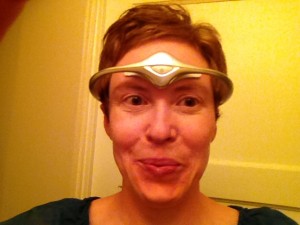SpringTMS, the first transcranial magnetic stimulation device for migraine that will be available to patients, has received FDA approval. Details are still sparse, but I’ve written up what I can find in SpringTMS Transcranial Magnetic Stimulation Device for Migraine Receives FDA Approval on Migraine.com. The highlights:
- Approval was based on a study of people with episodic migraine with aura. Participants had to have a visual, sensory or motor aura preceding at least 30% of their attacks and have between one and eight attacks a month. This may not be the final target population, though, depending on who is included in the pilot study and what the findings are.
- Before becoming available to the general public, several headache centers in the U.S. will conduct a pilot study to determine the optimal way to use the device. These clinics have yet to be made public. I’m looking into how to become part of the study and will let you know what I find.
- The cost is unknown. In England, it cost £160 per month (about $270 USD), as of January 2014.
- It will probably eventually be covered by insurance, but those details are unknown.
- It will be prescription-only.
- SpringTMS is a smaller version of Cerena, which received FDA approval in December 2013. Cerena will not be available to patients.
Here’s what I learned about the pilot study after I saw my headache specialist, who is organizing the study, in January: Update on Transcranial Magnetic Stimulation Device Availability. It looks like it could be on track for general availability in January 2015.

